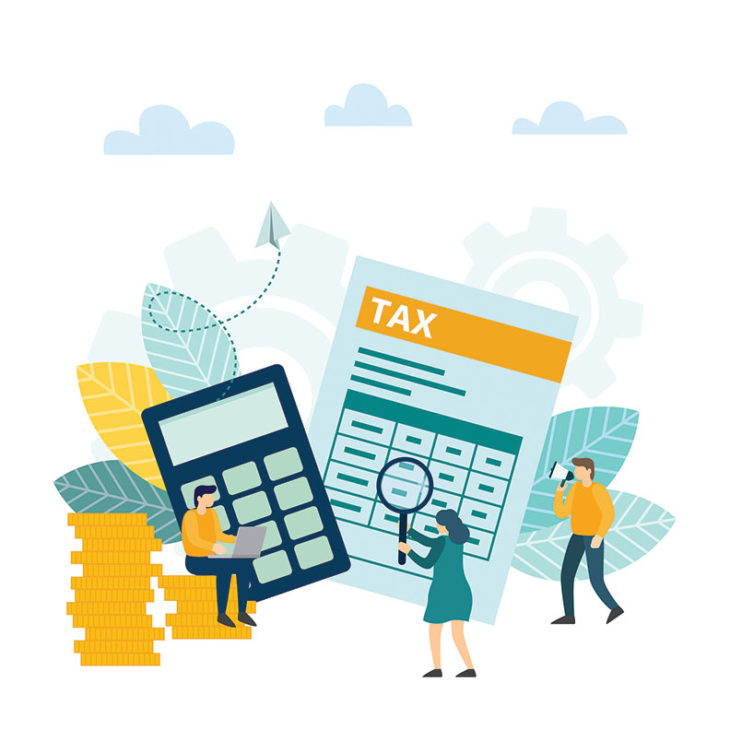Merry Christmas to all! My gift to you is a dozen tips that will help make you tax efficient for 2019.
1. COMPLETE A MOCK RETURN
Know your 2019 tax position and tax bracket now so you can determine which tax strategies will work best for you. High-income taxpayers need strategies to remove income from the top income tax brackets, and low-income taxpayers need to maximize the tax-saving strategies available at the lower brackets.
2. SELL LOSER STOCKS
Sell loser investments and offset your gains. You can use up to $3,000 of any excess losses to reduce other income. Losses greater than $3,000 will carry forward to next year. Be aware of the wash sale rules so you don’t lose the tax deduction.
3. SELL APPRECIATED STOCKS
Consider selling appreciated stock if you have capital losses and are in a high tax bracket. Your gain will be reduced or eliminated by your capital loss. For those in the lower tax brackets, your net gain will not be taxed. You can repurchase the stock, thereby effectively increasing your stock basis.
4. PAY OUT “REASONABLE COMPENSATION”
Make sure your s-corporation shareholder-employee’s salary meets the “reasonable compensation” standard. If a salary has not been taken, take one now.
5. PAY YOUR PROPERTY TAXES IN THE YEAR YOU GET THE BETTER TAX BENEFIT
If you itemize or have rental property, decide which year (2019 or 2020) you pay your property taxes will yield you the better benefit. You have until Feb. 1, 2020, to pay your taxes and not incur a penalty.
6. DONATE TO YOUR FAVORITE CHARITY
Consider making your 2020 charitable gifts in 2019 if you itemize. Over the holidays, clean out your closets and donate household goods or even a vehicle to a charity.
For those subject to the required minimum distribution, have your IRA distribution sent directly to the charitable organization. You forego the charitable deduction, but your distribution won’t be taxable.
7. MAKE A MORTGAGE PAYMENT
A last-minute mortgage payment will increase your mortgage interest expense.
8. MAKE YOUR HOME MORE ENERGY-EFFICIENT
This non-refundable credit is worth 30 percent of the cost of the energy-efficient equipment plus installation. Any unused portion of the credit can be carried forward to next year’s tax return. Qualify by purchasing energy-efficient exterior doors or windows, heating and air conditioning systems, water heaters and biomass stoves for new construction or home improvements.
9. BUY A FUEL-EFFICIENT VEHICLE
Get a tax credit up to $7,500 for purchasing a qualified plug-in electric drive motor vehicle (including a passenger vehicle or a light trucks). The amount of the credit is based on the kilowatt hours of capacity. Take caution in making your purchase because the credit begins to phase out when a manufacturer has sold at least 200,000 qualifying vehicles.
10. SPEND YOUR FSA MONEY
Flexible Spending Arrangement accounts are generally “use-it-or-lose-it” plans. If your FSA employer has not adopted a grace period, then make last-minute dental check-ups, eye exams and prescription eyeglass purchases.
11. CONTRIBUTE TO YOUR RETIREMENT
Contributing to a retirement account is a great way to not only defer income tax, but also to grow your investment through compounding. You also should maximize your company-sponsored 401(k) contribution to take advantage of the employer’s matching. Those in the lower tax bracket should consider contributing to a Roth IRA. Contributions to an IRA, ABLE account or employer-sponsored retirement plan could make you eligible for the retirement savers credit.
12. GIFT UP TO THE ANNUAL LIMIT
The annual limit is $15,000 per person, so mom and dad effectively could pass on $60,000 to their married child and their spouse. (This is less income tax related and more estate planning related.)
Please note that these tips are intended to be helpful and informative, but they do not replace professional tax or investment advice. For more information, call Tina Perkins at (228) 392-2991 at Tina Perkins, CPA, P.A., 4048 Popps Ferry Road, D’Iberville. Consultation is by appointment only.


